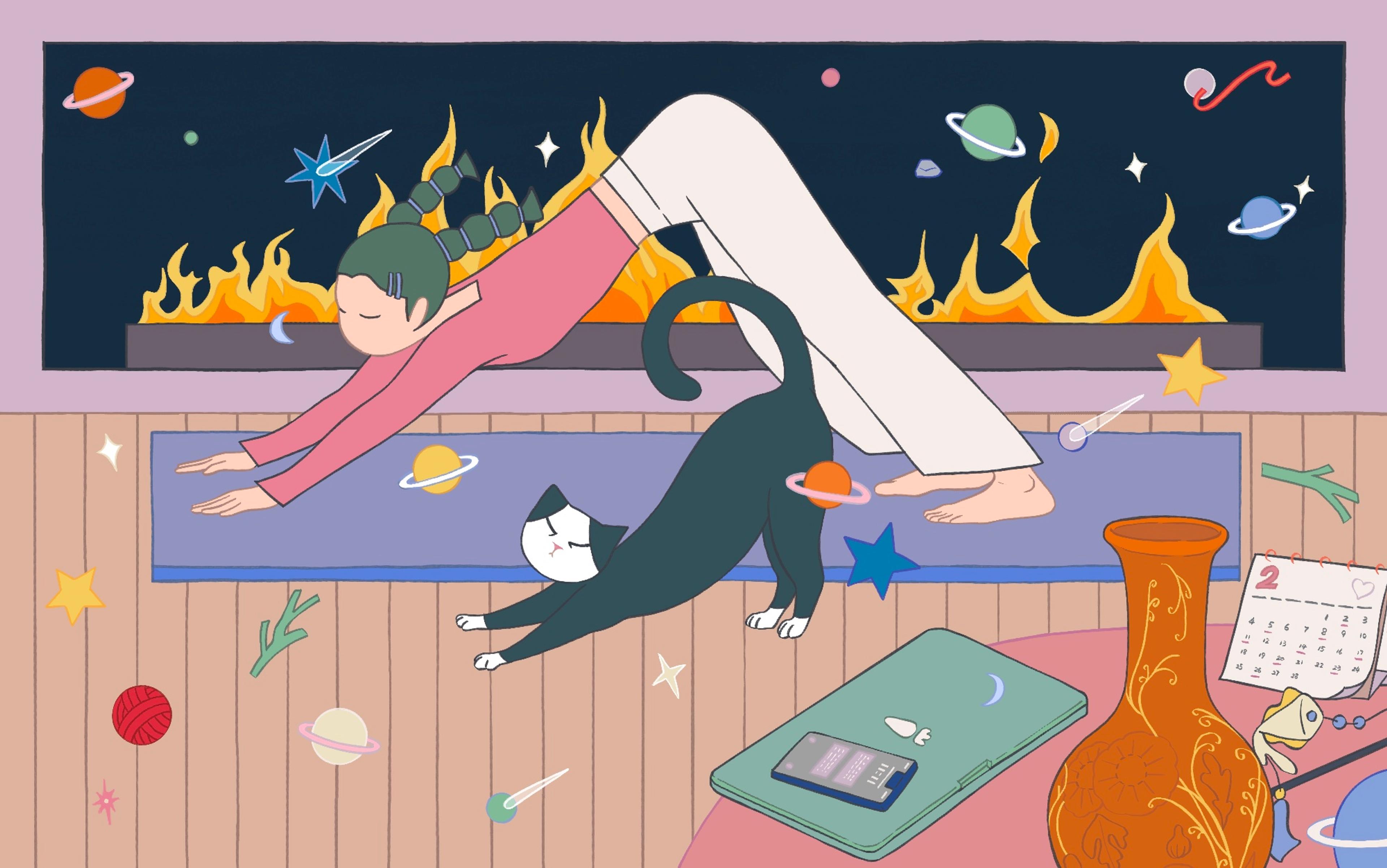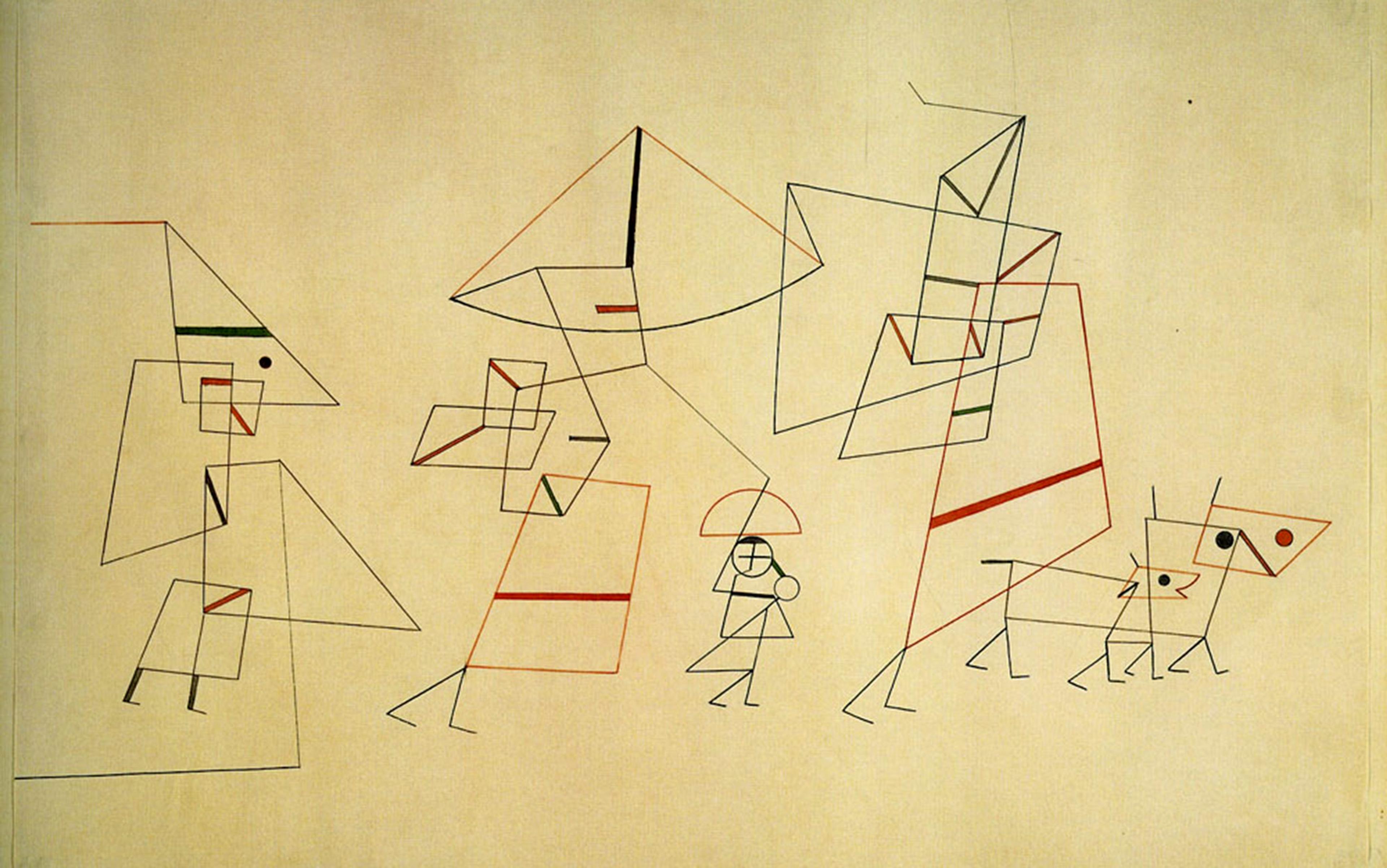Terrible things can happen. You get diagnosed with an incurable disease. Your accident changes your ability to do the activities that made life fun and meaningful. Your spouse decides that they want someone else. Even if you’re lucky enough to avoid huge life-changing events, you’re going to be faced with disappointments, hurts or humiliations that require you to make sense of the many ways that existence can be painful.
The inevitability of suffering is written into every aspect of our shared past. It has preoccupied philosophers such as Aristotle, Socrates, the Stoics, the Epicureans and the Cynics. Religious leaders have instructed the faithful in the meaning of suffering since humans first conceived of spirits or gods. The belief that our interpretation of events determines our experience of pain was seen in the writings of the 7th-century Buddhist Dharmakīrti and the 11th-century Islamic polymath Ibn al-Haytham. The universality of suffering is made palpable through works of art such as Michelangelo’s unfinished sculpture the Rondanini Pietà (1552-64), or J S Bach’s Chaconne in D Minor (c1710s-20s), to name only a few.
Despite all of that accumulated wisdom and perspective, I am still at a loss for what to say to some of my friends or clients in pain. There isn’t a new body for the woman diagnosed with Stage 4 ovarian cancer. No new spine for my friend who had a severe spinal cord injury from a skiing accident. There are also no straightforward solutions for the parents whose adult children no longer want them in their lives – an area in which I’ve been specialising for the past 15 of my 40 years as a psychologist. It’s not uncommon for such people to ask: ‘Will I die alone in a hospital bed with no children or grandchildren to comfort me? Who will bury me? Will my children even miss me once I’m gone?’
Nobody trained me for these questions, and I’m sure I responded clumsily and ineffectually in the first few years when I began to be flooded with referrals after writing my first book on estrangement, When Parents Hurt (2007). But after working with so many estranged parents over the past 15 years and doing my own research through the University of Wisconsin Survey Center, summarised in my new book Rules of Estrangement (2021), I slowly discovered something important: the more we try to evade or avoid painful realities, the more entangled we become in the tentacles of their embrace.
I found guidance in the research of the psychologist Marsha Linehan, the founder of dialectical behaviour therapy. ‘The path out of hell is through misery,’ Linehan wrote. ‘By refusing to accept the misery that is part of climbing out of hell, you fall back into hell.’ The path out of hell is through misery. What’s that supposed to mean? It means that you have to start by ‘radically accepting’ where you are right now. Radical acceptance means that you don’t fight what you’re feeling in this moment. You feel sad? Feel sad. Don’t judge it, don’t push it away, don’t diminish it, and don’t try to control its passage. Turn toward the feeling rather than turning away from it.
I learnt this lesson the hard way. Part of my interest in estrangement started with my own daughter cutting off contact with me for several years in her early 20s. I had been divorced from her mother for some time, but eventually remarried and had more children, an act that caused her to feel displaced in ways that I hadn’t fully understood until she was an adult. During those terrible years of my estrangement, I found myself daily rehearsing every parental mistake I’d ever made. Tender memories that had seemed impervious to revision became infested with doubt and self-criticism. The times when I knew that I’d been far from my best parenting self were thrust into a torturous spin cycle of ‘If only I hadn’t said that, done that, written that.’ At some point, instead of continuing down this path I thought: ‘Your daughter might never talk to you again. Ever. Last time you saw her? That might be the last time you’ll ever see her. You’re going to have to accept that.’ It wasn’t a harsh or critical voice – more like wise counsel from some censored part of me. And the allowance of that gloomy reality was oddly, paradoxically, reassuring. It helped me to stop fighting something that wasn’t changing. It freed me to be more open to facing the ways that I’d let her down, an act that led to our eventual and blessed reconciliation.
Radical acceptance emphasises the importance of facing our present condition in all of its awful implications. Statements such as ‘This isn’t fair,’ ‘I don’t deserve this,’ ‘This isn’t how it’s supposed to be,’ however true, only heighten our suffering. To use a mundane example, consider being stuck in traffic, a situation where you have little control. It’s tempting to berate yourself for not leaving earlier, for living in a congested city, or to hate the person who’s causing the traffic because he didn’t check his petrol gauge before leaving home. In these moments, we can either get worked up into a frenzy over the injustice of it all – or take a deep breath and accept that it is what it is, and that it’s beyond our control.
Yet, it isn’t only feeling victimised by life in small or large ways that creates suffering: sometimes it’s our attempt to replace painful thoughts with happy ones. The title of a paper by the psychologists Matthew Killingsworth and Daniel Gilbert, ‘A Wandering Mind Is an Unhappy Mind’ (2010), sums up this reality. Killingsworth and Gilbert found that people were less happy when they attempted to avoid thinking about the present by thinking about the past or the future. In other words, fighting what they were feeling, even with happy thoughts, was more aversive than accepting their present condition. In a related saying, questionably attributed to Laozi: ‘Depression is living in the past, anxiety is living in the future, and joy is found living in the present.’
Of course, living in the present doesn’t necessarily mean more joy – or any joy, for that matter. If anything, focusing on the immediate present might well intensify your feelings of sadness, fear or anger. However, we can gain increasing control and awareness over how long and how intensely we experience painful realities by facing them in the present. We can reinterpret the meaning of painful events, take actions to decrease the pain and reduce the distance it travels through other aspects of our lives. Facing our thoughts and feelings head-on might also free us to appreciate positive aspects of our lives, unrelated to the preoccupying event: those whom we love and those who love us.
An example of going toward painful feelings is illustrated in the work of the psychologist and neuroscientist Lisa Feldman Barrett, who advises people to get into the ‘granularity’ of their emotions. If there’s something that’s making you sad, try to go even deeper in your exploration and description. Ask yourself whether it’s just sadness, or is it actually despair, grief, misery, agony, rejection, insecurity, sorrow or defeat? Is it just anger? Or is it resentment, rage, irritation, jealousy, annoyance or bitterness?
Why should you get more specific? Barrett, who wrote the book How Emotions Are Made (2017), found that higher emotional granularity was associated with lowered needs for medication, fewer hospitalisation days for illnesses, and greater flexibility in regulating emotions. Barrett doesn’t recommend that we dwell on the feeling, but rather that we try to explore its shape and boundaries to increase its definition.
Barrett notes that culture greatly determines what we attend to and how our emotions are made. She disagrees with researchers such as the psychologist Paul Ekman who believes that each emotion has its own neurological signature that can be similarly identified across cultures. Instead, she observes that some cultures don’t have a unified concept for the experiences that Westerners lump together as ‘an emotion’. She lists as examples the Ifaluk of Micronesia, the Balinese, the Fulani of West Africa, the Ilongot of the Philippines, the Kaluli of Papua New Guinea, the Minangkabau of Indonesia, the Pintupi of Western Australia and the Samoans as cultures that characterise emotions not as something that occurs within the individual, but as interpersonal events that require two or more people.
The power of radical acceptance can also be found in exposure therapy, a form of cognitive behavioural therapy (CBT). In exposure therapy, participants are guided to gradually turn up the heat on events or outcomes that they most fear, dread or seek to avoid. This form of therapy can be done either by imagining the experience – for example, when a solider with post-traumatic stress disorder (PTSD) is guided to relive a traumatic event from the war – or when someone who fears public speaking joins Toastmasters and is required, over time, to get up on stage and talk to an audience.
Exposure therapy, like radical acceptance, operates from the premise that what stays in the dark grows in the dark; that serenity is better achieved by looking more deeply into the face of what we fear than by heading in the other direction. For example, the first time you watch a horror movie, you’re going to be horrified – that is, if it’s doing its job. But how scared will you be by the fifth, let alone the 10th viewing of the same movie? At some point, your mind concludes that, since nothing terrible has happened, you should go check your email or get something to eat. The parallel to the horror movie is that the more we expose ourselves to (and radically accept) that which we fear, the more we lessen its hold on us. The more we avoid facing our fears, the less we’re able to loosen their hold.
Facing death might allow us to feel more accepting and grateful for being alive
Another technique used in exposure therapy is ‘flooding’, which employs the ‘downward arrow’ technique. Here, you take the event that most troubles you and you keep going down, down, down until you’ve reached your absolute worst-case scenario. For example, Jennifer discovered that her husband was cheating on her. When she confronted him, he admitted to it, said he was in love with the other woman and wanted to file for divorce. Jennifer was understandably devastated and in enormous pain. However, she had a bigger problem, and that was the way her mind terrorised her by telling her that it was her fault, that she’d never fall in love again and, perhaps most important, that the pain she was experiencing was intolerable. Using the model of the horror movie, I had Jennifer write out a paragraph of her most compelling predictions about the future and beliefs about her lack of worth in all their scary detail. I directed her to write it out each day and read it over and over for 5 to 15 minutes until her anxiety and emotions began to come down for that day. I discouraged her from distracting herself because I knew that her mind couldn’t get appropriately bored with the horror movie unless she was intensely watching it. Over time, her anxiety began to ease and her ideas began to challenge the automaticity of her pathogenic beliefs. Like most psychological interventions, it took daily practice and diligence. However, with time and effort, she was able to shorten both the duration and intensity of her suffering by going toward it rather than away from it.
The techniques of flooding and exposure might sound similar to what you’re already doing – endlessly repeating and replaying negative events without any positive consequence. However, the goal isn’t just to obsess about your worries or difficult emotions; it’s to consciously set aside a limited time every day – typically with the instruction of a therapist trained in CBT – to gradually tolerate more and more of your worst-case beliefs until the emotions stop being so compelling.
Mindfulness meditation is a common way to practise radical acceptance since the goal is to observe whatever thoughts and feelings arise and then return to the breath, mantra or whatever else anchors the practitioner to the present. The difference between meditation and the techniques of exposure is that the latter intentionally encourages bringing to mind worst-case scenarios, whereas meditators are commonly instructed to simply observe and accept whatever appears – positive or negative – and then watch it pass.
Yet, the distinction between exposure and meditation might be thin. A meditation called maranasati (death awareness) encourages individuals to frequently think about their own mortality. As the Buddha is reported to have said: ‘Of all mindfulness meditations, that on death is supreme.’ Facing death might allow us to feel more accepting and grateful for being alive. It might remind us that – despite life’s pain and complications – it’s better than the alternative. And if you want to practise facing your inevitable passing, there’s an app for that called We Croak (seriously).
Psychedelics might also provide an opportunity for radical acceptance. While they’ve been shown to be beneficial in the treatment of psychological maladies such as depression, anxiety, PTSD and end-of-life issues, their mechanism isn’t completely understood. I believe that part of the efficacy of psychedelics lies in the way that they remove from us the ability to regulate or control what comes in and out of our minds while we’re under the influence of these powerful agents. The oft-reported experience of rebirth during the psychedelic encounter might result, in part, from having to radically face and accept your fears – their terrifying or beautiful truths – and seeing that you’re not destroyed. The integrity of the ship holds despite being tossed back and forth in tumultuous seas.
The paediatrician and psychoanalyst Donald Winnicott argued that infants and toddlers internalise the attitude and disposition of the parent by playing independently in the mother’s presence (almost all psychology research was about mothers up until roughly two decades ago, when we discovered fathers). In the play scenario, the ‘holding environment’ of parental interest and availability allows infants to explore their environment with more confidence and feelings of security. Later theorists of attachment, such as Mary Ainsworth, found that infants who felt securely attached were more adventurous in their explorations than those who were less securely attached.
Winnicott described therapy as a form of play where clients explore the full range of their thoughts or feelings with the support of their therapist. For example, much of what I do as a psychologist is listen. I advise where I can, make suggestions where appropriate, but I also offer a willingness to not only hear the pain of my clients, but to do so without interrupting, advising or challenging them to consider alternative explanations. Instead of reassuring them that it’s not so bad, that things will get better, that it’s bound to change, I’m more likely to accept that their pain is understandable, that their situation might not improve – it might, in fact, get worse – and that their current painful reality might be the new normal. It took me years to see the therapeutic value in just shutting up and allowing my clients to get into their details, without trying to make it all better. In the process of just listening and caring, I’m extending my radical acceptance of their painful situation.
Of course, most people do want advice and direction from their therapist, and I’m happy to oblige them. But first they have to know that I can tolerate hearing how intensely compelling are their painful thoughts or feelings, how wretched were their actions, and how much to blame they feel for their life’s outcomes. Once that’s in place, I’m better able to help them move toward self-compassion, especially in cases where they’re burdened by ongoing feelings of self-criticism. Radically accepting our flaws – the ways that our actions hurt those we love, the ways that we’re not whom we hoped to be – isn’t only our best chance at redemption in the eyes of those we hurt; it’s our best chance of changing our relationship to our own profound feelings of guilt, sorrow or regret.
Radical acceptance might still be too weak to silence the shrill voices that threaten your wellbeing
But why is feeling anxious so common? It’s because our brains didn’t evolve to keep us happy; they evolved to keep us alive. To that extent, our minds inflate potential dangers because those who failed to assess real threats didn’t live long enough to transmit their genes. For example, if my Jewish ancestors had said: ‘Dictator, schmictator. You worry too much!’ and stayed in eastern Europe, they wouldn’t have survived long enough to pass on their anxious genes to me and my offspring. Put another way, the cast of annoying, catastrophising, over-generalising, self-criticising mental characters that create so much suffering have adaptive value; they just shouldn’t be put in charge of the show. Radical acceptance is a way of saying: ‘You have my attention. Thank you for your concern that things are as terrible as you’re describing and might be that bad in the future, too. I have taken seriously what you have to say, but now I’m going to see what else emerges in my consciousness.’ While plenty of painful feelings pass without our intervention, those that create the most acute suffering require more from us. If we neither investigate and label nor accept the nettlesome thoughts or feelings, the part of us that believes we’re truly in danger might get louder and more insistent.
On the other hand, if I’ve learnt anything as a psychologist, it’s that what works for one person will be useless for another. Practising radical acceptance, or any of the other methods that I’ve described here, might still be too weak a remedy to silence the shrill and compelling voices that threaten your wellbeing. If that’s the case, you might be better helped with actions and activities that move you away from your ruminations, such as intense exercise, loud music, supportive friends, spending time in nature, giving to others and cultivating self-compassion.
Culture can also determine how hard we need to work to escape the confines of our painful beliefs. There’s increasing evidence that cultures with high rates of social inequality such as those found in the United States, China or India have much higher rates of depression and anxiety than those with low social inequality such as Germany, Japan and the Scandinavian countries. Recent research by the psychologist Iris Mauss and colleagues found that the more actively we pursue happiness as an individual quest, as is commonly prescribed in the US, the more unhappy, lonely and depressed we’re likely to become. By contrast, in those countries where happiness is defined as a form of social engagement rather than an individual pursuit, greater happiness is the result.
That’s because our fates are inextricably tied to others. Americans, despite our staggering wealth, are poor in relations. We’re more isolated, more tribal, more lonely. While practising radical acceptance is an important way to face truths we’d rather avoid, friends and supportive family can make the act of acceptance less scary, less lonely and, ultimately, less painful. It’s ‘very, very dangerous’, writes Virginia Woolf in Mrs Dalloway (1925), ‘to live even one day’.
But far more dangerous when we forge our paths alone.






